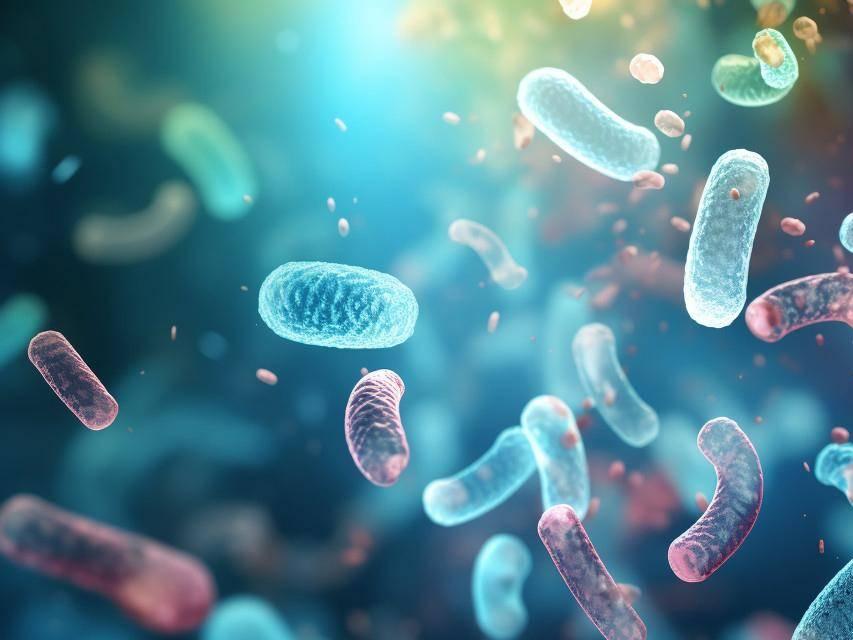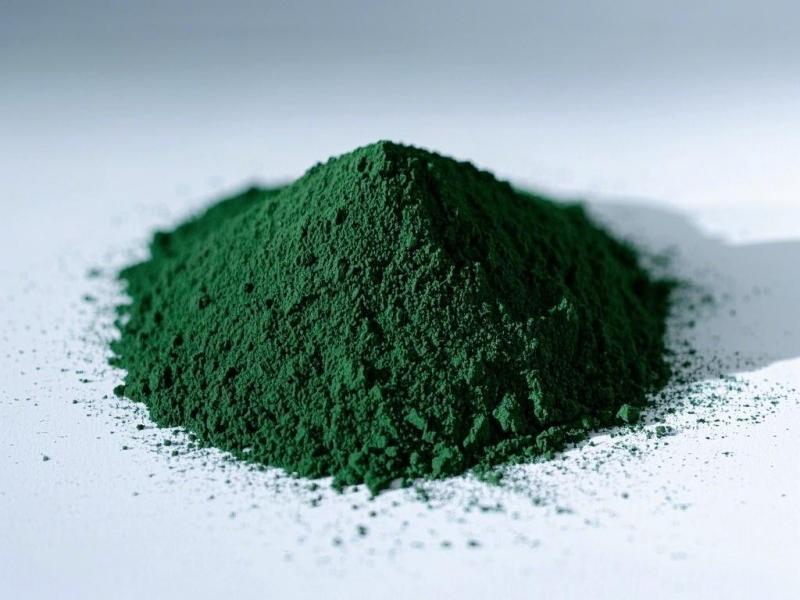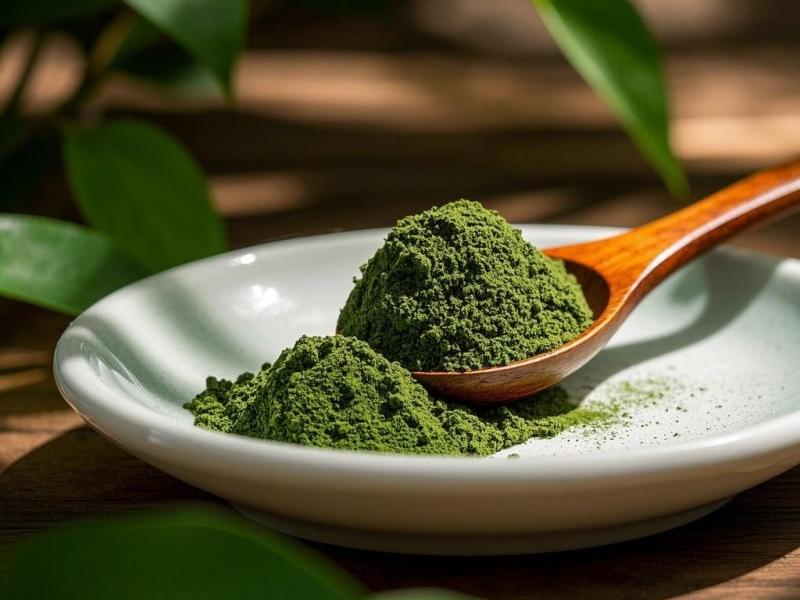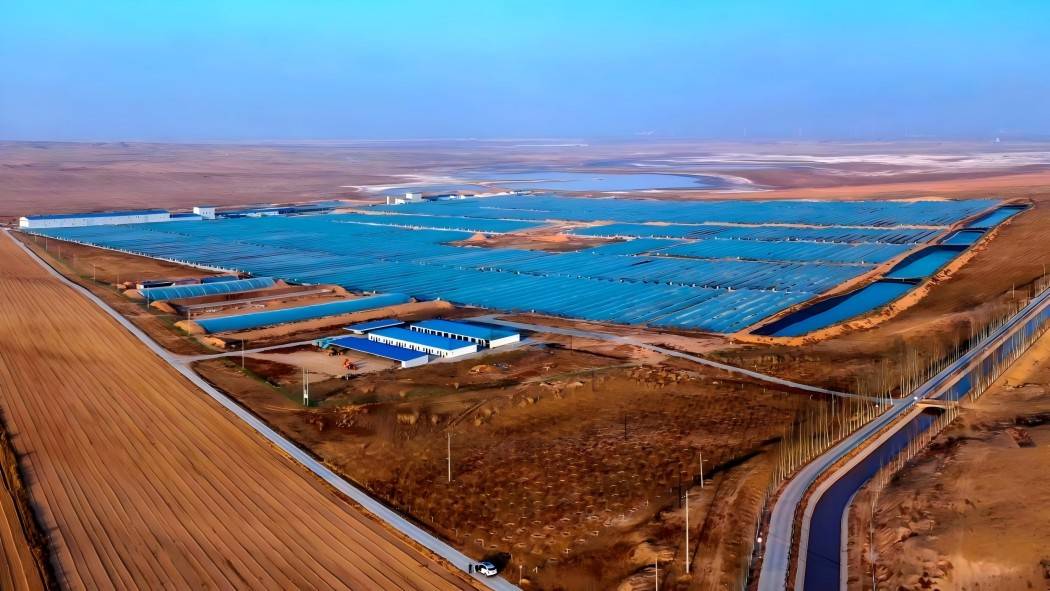What Is the Use of Spirulina Powder in Aquatic Feed?
Aquaculture is one of the world's fastest growing industries, and how to achieve sustainable development is the main problem facing the aquaculture industry. Among these, the importance of artificial compound feed in the sustainable development of the aquaculture industry is becoming increasingly prominent. Fish meal, as the highest quality protein source in aquafeed, has unparalleled advantages, including high protein content, balanced amino acid composition, high digestibility, good palatability and attractiveness, low carbohydrate content and absence of anti-nutritional factors, as well as containing a variety of functional substances [1]. However, it is also the strong demand for fishmeal in aquafeeds that has led to its rising price. For this reason, reducing the dependence of aquafeeds on fishmeal is currently an important and urgent issue. As a major aquaculture country, China imports about 1 × 106 t of fishmeal each year (the global total production of fishmeal is 4 × 106 to 5 × 106 t per year), so it is particularly urgent and difficult to find alternatives to reduce the dependence on imported fishmeal [2].
Plant proteins such as soybean meal have a price advantage over fishmeal, but also have many disadvantages: low protein content, lack of limiting amino acids such as lysine and methionine, high content of fiber and non-starch polysaccharides, low digestibility, poor palatability, and a large number of anti-nutritional factors [3]. Single-cell protein sources such as microalgae are considered to counteract the disadvantages of plant proteins. Spirulina powder made from spirulina is widely regarded as a feed ingredient that can replace fishmeal. This paper combines the latest research results at home and abroad to provide an overview of the application of spirulina powder in aquatic feeds in recent years, and looks ahead to the application prospects of spirulina, with a view to providing a reference for the development and utilization of spirulina.
1 Current status of spirulina farming
Spirulina is the common name for organisms in the genus Spirulina, which belong to the phylum Cyanobacteria, class Cyanophyceae, order Spirochaetales, and family Spirochaetaceae. Spirulina is an ancient prokaryotic organism on Earth, with a history of life of 3.5 billion years [4]. In 1967, CLEMT of France and JEAN LEONARD of Belgium isolated and cultured Spirulina, and the technology has been widely used since then [4]. The continuous maturity of the technology and huge market demand have led to a growing output of spirulina. After decades of development, China has become the world's largest producer of spirulina raw materials [5]. Zhang Xuecheng et al. [6] estimate that the cultivated area of spirulina in China is about 750 × 104 m2 , with more than 60 cultivation bases. The annual output of spirulina powder is 9,600 tons, accounting for 80% of the world's total output [6].
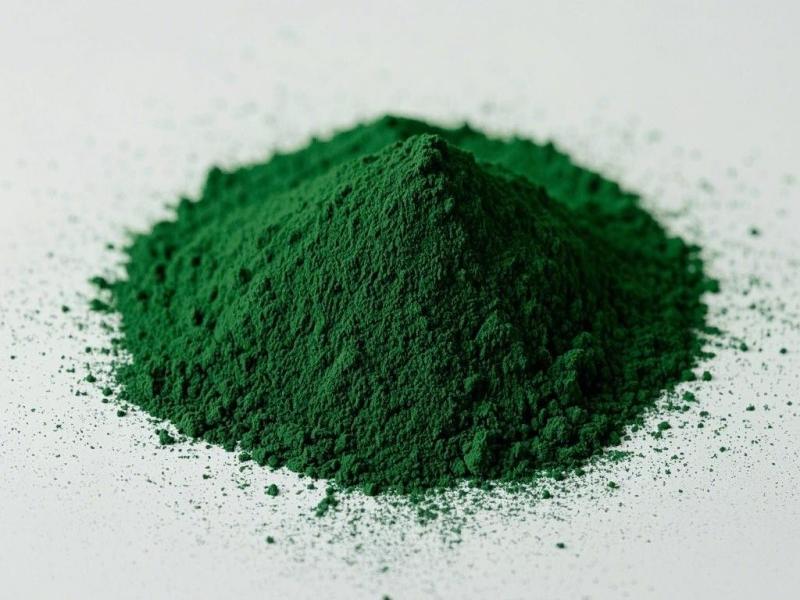
2 Nutritional composition of spirulina powder
Spirulina powder refers to the product obtained after spirulina is washed, filtered, and spray-dried at high temperature [7]. At present, the main species used for large-scale cultivation and production of spirulina powder are Spirulina platensis and Spirulina maxima [7]. Spirulina is rich in nutrients. The dry powder made from spirulina contains 60% to 72% crude protein, 5% to 10% crude fat, and 6% to 8% ash by dry weight of the algae [8-9]. Spirulina powder has a very balanced amino acid profile and can meet the amino acid requirements of aquatic animals [10-11]. It is a high-quality protein source (Table 1). Spirulina powder is also rich in vitamins, minerals, vitamin A, vitamin E and B vitamins, especially vitamin B12, etc. [10, 12]. Spirulina powder is also rich in polyunsaturated fatty acids, of which γ-linolenic acid accounts for 40% of total fatty acids [13]. In addition, spirulina powder also contains a lot of bioactive ingredients, such as spirulina polysaccharides, β-carotene, zeaxanthin, phycobiliproteins, endogenous enzymes and organic minerals, etc., which make spirulina have the physiological effects of improving immunity, anti-aging, lowering blood lipids, lowering blood pressure, promoting protein synthesis, and anti-cancer, etc., and have been widely used in functional foods, pharmaceutical health products, feeds, cosmetics, etc. [14].
3 Research progress on the application of spirulina powder in aquatic feeds
In addition to analyzing the nutritional composition of feed ingredients, their application potential also needs to be comprehensively evaluated in terms of palatability and digestibility for aquatic animals, as well as growth, immunity and quality [15].
3.1 Digestibility of spirulina powder
There are relatively few reports on the digestibility of spirulina powder in aquatic animals, but it is generally believed that because spirulina powder contains only a small amount of cellulose, the cell walls are non-fibrous, and it contains almost no anti-nutritional factors, aquatic animals can digest and absorb it well. In the existing research reports, the apparent digestibility of dry matter and protein of spirulina powder reached 77.9% and 88.2% for Arctic char (Salvelinus alpinus) [body mass (315 ± 82) g] and 82.1% and 84.7% for Atlantic salmon (Salmo salar) [body mass (745 ± 117) g] [16]. Nile tilapia (Oreochromis niloticus) (average body mass 20 g) achieved a protein digestibility of 86.1% for spirulina powder, and a digestibility of over 93% for individual amino acids [17]. The apparent protein digestibility of spirulina powder by the Chinese mitten crab (Eriocheir sinensis) was 86.8%, which was even higher than its apparent protein digestibility of fish meal (83.6%) [18]. These studies show that spirulina powder can be used as a high-quality alternative protein source to fish meal in terms of protein content and protein digestibility.
3.2 Effect of spirulina powder on feed palatability
The palatability of spirulina powder is derived from the low molecular weight water-soluble substances it contains, mainly including nucleotides, glutamic acid, etc. [19]. The combination of these substances forms an excellent attractant, but there has been little research on the attractiveness and palatability of spirulina powder, and it has only been reported in a small number of applications for prawns. JAIME-CEBALLOS et al. [20] reported that Litopenaeus schmitti preferentially fed on feed supplemented with 5% spirulina powder. SILVA-NETO et al. [21] found that the addition of 0.5% spirulina powder to low-fishmeal diets had a significant feeding promotion effect on Litopenaeus vannamei. It is inferred that this feeding promotion effect may be related to the nucleotides and several amino acids, especially the high content of glutamic acid, in spirulina powder.
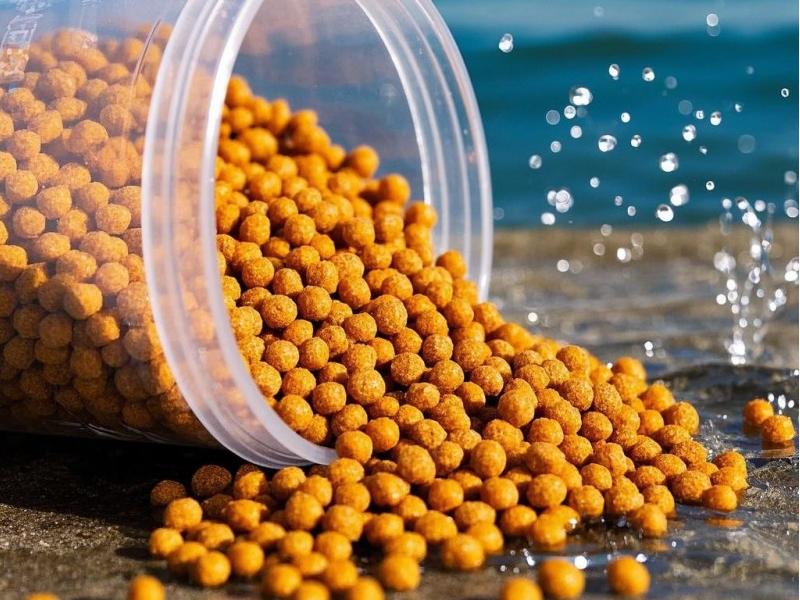
3.3 Effect of spirulina powder on the growth of aquatic animals
3.3.1 Low-ratio replacement of fish meal
Six groups of feeds were prepared by adding 0, 0.5%, 0.75%, 1%, 1.5% and 2% spirulina powder to the feed. The Nile tilapia were fed for 3 months. At the end of the experiment, the weight gain and specific growth rate were significantly higher than those of the control group, with the 2% group Nile tilapia being 1.8 times and 1.3 times that of the control group tilapia, respectively [22]. In an experiment with the rock bream (Oplegnathus fasciatus), replacing 5% of the fish meal with spirulina powder significantly increased weight gain (32.5 g and 26.6 g, respectively), specific growth rate (0.81% and 0.68%), protein efficiency (1.04 and 0.91), and significantly reduced the feed conversion coefficient (1.98 and 2.25). When the proportion of spirulina powder was increased to 15%, there was no effect on growth performance [23].
When 5% spirulina powder was added to the feed of golden barb (Puntius gelius), it also significantly increased the weight gain and specific growth rate of the fish. respectively, 26% and 75% higher than the control group [24]. ADEL et al. [25] found the same results after adding 5% to 10% spirulina powder and feeding European sturgeon (Huso huso). The weight gain, specific growth rate and feed coefficient were 36.41 g, 2.78% and 1.72, respectively, which were significantly higher than those of the control group (23.16 g, 2.22% and 2.18). KIM et al. [26] replaced 6.8% of the fish meal in the feed of flounder (Paralichthys olivaceus), and the weight gain and growth of the fish were not affected. TEIMOURI et al. [27] replaced fish meal with 0, 2.5%, 5%, 7.5%, and 10% spirulina powder was used to replace fish meal in the feed of rainbow trout (Oncorhynchus mykiss). It was found that there was no significant difference compared with the control fish meal feed group. The weight gain, specific growth rate, and feed coefficient of the 10% group were 130.7g, 1.39% and 1.03, respectively, which were basically no lower than those of the control group (120.7g, 1.32% and 1.13). SIRAKOV et al. [28] used spirulina powder to replace 10% fish meal and feed rainbow trout, and there was no significant difference in growth and feed coefficient compared with the control whole fish meal group. In summary, the above studies have shown that adding the right amount of spirulina (2.5% to 10%) to the feed has a significant positive effect on the growth of aquatic animals and can also save on feed usage.
3.3.2 High proportion of replacement fishmeal
OLVERA-NOVOA et al. [29] reported that there was no significant difference in weight gain, specific growth rate, feed coefficient, protein efficiency and fishmeal feed group when Nile tilapia was fed with spirulina powder instead of 40% fishmeal for 12 weeks. In the food of guppies (Poecilia reticulate), spirulina powder replacing 40% of the fish meal also did not affect weight gain, specific growth rate, feed coefficient or survival rate [30]. ABDULRAHMAN et al. [31] used spirulina powder to replace 20% of the fish meal in the feed of carp (Cyprinus carpio). Compared with the fish meal control group, the weight gain of the carp in the 20% group was 1.8 times that of the control group, which was significantly higher. The authors believed that the partial replacement of fish meal in carp feed with spirulina powder could promote the growth of carp.
EL-SAYED [32] showed that spirulina powder can replace 50% of the fish meal in the feed of the flat snapper (Rhabdosargus sarba) in Dapeng Bay without affecting its growth and feed utilization efficiency. PALMEGIANO et al. [33] used spirulina powder to replace fish meal (20% to 60%) to farm Siberian sturgeon (Acipenser baeri) for 1 2 weeks. Even when the replacement level reached 60%, its growth and protein efficiency (2.72) were still significantly higher than those of the control group (1.90), while the feed coefficient (1.22) was significantly lower than that of the control group (1.39). After spirulina replaced 75% of the fish meal, the weight gain (5.56 g), protein efficiency (3.32%) and protein deposition rate (45.08%) were higher than those of the fish meal control group (4.32 g, 2.63% and 37.07%) [34]. Other studies have shown that for carp, replacing 100% of the fish meal with spirulina powder did not reduce the weight gain, specific growth rate, feed coefficient and protein efficiency of the carp, but instead increased the protein deposition rate [35].
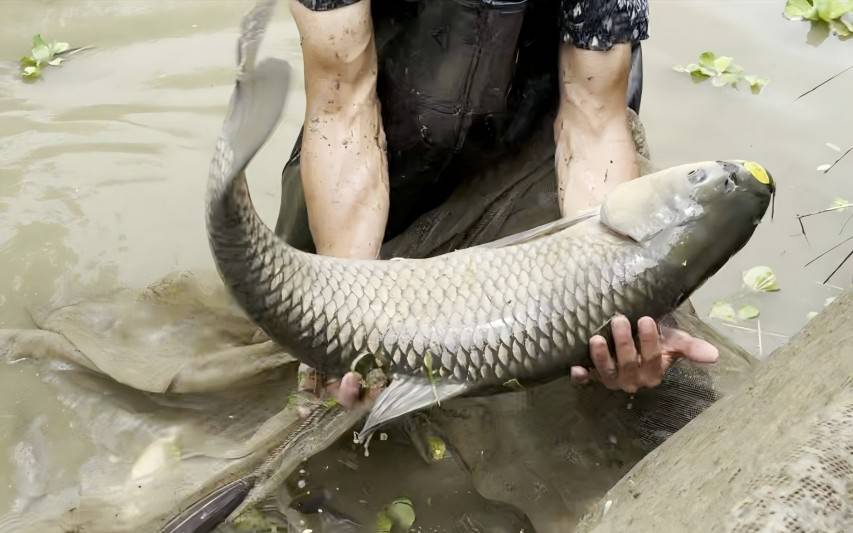
In another cyprinid fish, Catla catla, replacing 100% of the fishmeal with spirulina powder also did not reduce its weight gain, specific growth rate, feed coefficient or protein efficiency [36]. The results of a study in the Mekong giant catfish (Pangasianodon gigas) also showed that complete replacement of fishmeal with spirulina was feasible, and its growth was not significantly affected [37]. Replacing 75% of the fish meal with spirulina powder fed to Vanamei shrimp did not affect weight gain, specific growth rate, protein efficiency or survival rate after 50 days of feeding. However, when fish meal was completely replaced, weight gain and feed conversion were significantly reduced [38].
However, Radhakrishnan et al. [39] found that spirulina powder can completely replace fishmeal in the feed of Macrobrachium rosenbergii, and the growth of the 25% to 75% replacement group was significantly higher than that of the fishmeal control group. The above research results show that spirulina powder replacing a certain amount of fishmeal (25% to 75%) will not have a negative impact on the growth of most farmed animals, especially herbivorous and omnivorous fish. It is even better than the fishmeal group, but when replacing a large amount of fishmeal, especially when replacing it completely (>75%), it may inhibit growth and feed utilization. The reason for this may be that after complete replacement, the special functional substances in fish meal are missing, and this needs to be studied in more depth through experiments. At the same time, spirulina powder has not yet been studied in depth and extensively in carnivorous fish feed, and the utilization effect of spirulina powder by carnivorous fish needs to be verified experimentally.
3.4 Effect of spirulina powder on the immunity of aquatic animals
Spirulina proteins, polysaccharides and β-carotene in spirulina powder can improve the immunity of farmed animals. The polysaccharides contained in microalgae have an immune-enhancing effect. When applied to aquatic feeds, they can help to improve the disease resistance of farmed animals. ANDREWS et al. [40] found that after adding 1% to 4% spirulina powder to the feed of Labeo rohita, the total number of blood red blood cells, hemoglobin, and white blood cells increased significantly, as did the total serum protein, albumin, globulin, and respiratory burst activity. After 60 days of feeding, the survival rate of Leptobarbus rutilus fed spirulina (70%) was significantly higher than that of the control group (45%).
ABDEL et al. [41] also found the same effect in Nile tilapia fed 1% spirulina powder. After infection with Aeromonas hydrophila, the cumulative mortality rate of Nile tilapia fed 1% spirulina (10%) was much lower than that of the control group (80%). KIM et al. [26] also found that the lysozyme activity and respiratory burst activity of turbot were significantly increased after adding 3.4% spirulina powder to the feed. WATANUKI et al. [42] found that after feeding carp with spirulina for 5 days, the kidney leukocyte phagocytic activity and superoxide anion content were significantly higher than those of the control group. Vannamei shrimp injected with 6 to 20 μg·g-1 spirulina extract had higher phagocytic cell activity, and the number of Vibrio alginolyticus in the shrimp was significantly lower than that in the uninjected control group after 72 h of infection with Vibrio alginolyticus [44]. CHEN et al. [45] also found that vanamivir shrimp feeding with the addition of 3% to 6% spirulina powder also had higher lysozyme and phagocytic activity, and a higher survival rate after infection with Vibrio alginolyticus (70% and 30%, respectively). Spirulina powder has a clearing effect on Vibrio alginolyticus infection in shrimp (40% to 60% in the test group and 0% in the control group).
3.5 Effect of spirulina powder on the quality of aquatic animals
The quality of aquatic animals includes their nutritional composition, flavor substance content, physical characteristics of the muscles and body color, meat color, and organoleptic qualities. Adding spirulina powder has no effect on the main nutritional components of aquatic animals, such as moisture and protein, but significantly reduces their fat content [46-47]. For example, KHANZADEH et al. [48] found that the body fat content of the hair-footed perch (Trichopodus trichopterus) gradually decreased as the proportion of spirulina replacing fish meal increased. The body fat content of the 20% group was only 8%, about half the fat content of the control group (15%). TEIMOURI et al. [49] and JAFARI et al. [50] also found that after replacing 5% to 10% of the fishmeal with spirulina powder, the total fat, saturated fatty acids, and unsaturated fatty acids in the rainbow trout meat of the spirulina-fed group were lower than those in the fishmeal control group, while the content of polyunsaturated fatty acids, especially EPA and DHA, was higher than that of the control group. Some studies have shown that the polyphenols in spirulina may be one of the reasons for the decline in fish fat in the spirulina group [23, 47]. However, the mechanism by which spirulina improves the fatty acid deposition ratio of aquaculture animals and significantly increases the content of polyunsaturated fatty acids needs further in-depth research.
Spirulina powder is mainly composed of carotenoids in the form of β-carotene and zeaxanthin, which can be used to increase the body color and muscle pigment content of aquatic animals [51]. Zhang Xiaohong et al. [52] found that adding spirulina to the feed can effectively improve the body color of blood parrot fish (Cichlasoma citrinellum × C. synspilum). the pigment content in the skin increases with the amount of spirulina added (0–15%). The total skin carotenoid content of the 15% group was 54.62 mg·kg−1, which was significantly higher than that of the control group (34.02 mg·kg−1). Zhiqiang Jiang et al. [53] also found that with the increase in the amount of spirulina added (0–15%), the tail fin and skin carotenoids and red values of koi (Cyprinus carpio haematopterus) gradually increased.
JAMES et al. [54] also found the same trend in their experiments with swordtail fish (Xiphophorus helleri). The total carotenoid content of the fins, skin and muscles of swordtails also increased significantly with the addition of spirulina (0–8%). The 8% group showed increases of 200%, 105% and 228% respectively compared to the control group. After adding 2.5% to 10% spirulina powder to the diet of Muthu's bridge bream (Pseudotropheus acei), the yellowish-blue color of the fish's body surface darkened, and the carotenoid content also increased significantly. The 10% group increased by 105% compared to the control group [55]. After feeding Botia dario with spirulina powder containing 2.5% to 10%, the carotenoid content of the skin and muscles of the fish was significantly higher than that of the control group without added spirulina, increasing by 47% and 42%, respectively [56].
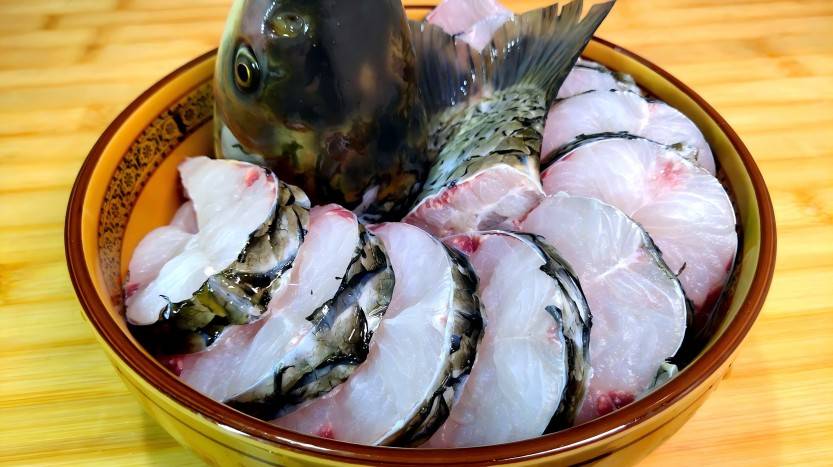
TEIMOURI et al. [27] also found the same results in rainbow trout. The content of carotenoids in rainbow trout fillets increased with the addition of spirulina powder to the feed, and the red value (a*) and yellow value (b*) of the fillets were also significantly higher than those of the control group without the addition. The results of studies on crustaceans are consistent with those on fish. For example, LIAO et al. [57] found that the highest carotenoid content, 12.02 mg·100 g-1, was obtained by adding 3% spirulina powder to the feed of Penaeus monodon, and astaxanthin is the main pigment (70% of total pigments). Zhang et al. [58] found that with the increase of spirulina powder (2% to 10%) feeding, the body color of the adult Chinese mitten crab also deepened, and the addition of 6% spirulina powder could already maximize the body color. Gong Zhi et al. [59] found that the content of carotenoids and astaxanthin in the head and thoracic carapace of the Chinese mitten crab was significantly higher than that of the unadded control group after adding 2% spirulina powder to the Chinese mitten crab feed, increasing by 86% and 130%, respectively. These results indicate that crustaceans can convert the carotenoids in spirulina, especially zeaxanthin, into astaxanthin and accumulate it effectively [60].
4 Summary and outlook
A large number of applied studies on various aquaculture animals have shown that spirulina powder not only reflects its high nutritional value, but also has a variety of functional effects on aquatic animals (such as improving palatability, enhancing disease resistance, increasing the content of polyunsaturated fatty acids in aquatic animals, and increasing the effect of body color), and has great application potential. With the development of the aquaculture industry and the continuous increase in production, there is a definite need for new high-quality feed ingredients. These advantages of spirulina powder make it a high value-added feed source in aquafeed (minerals, vitamins, pigments, antioxidants, etc.), rather than just using it as a general feed protein source to replace fishmeal. At present, spirulina powder is already widely used in bait or aquafeed abroad, but the application of spirulina powder in aquafeed in China is still in a relatively preliminary stage. The potential of spirulina resources has not yet been realized, and more in-depth systematic research is needed. The research results should be publicized to make aquaculture operators aware of the advantages of spirulina.
At present, the more significant problems affecting the development of the spirulina industry are its low yield and expensive production inputs, which result in high production costs (the price per kilogram of spirulina powder is generally 3 to 5 times that of fishmeal), thus affecting the promotion and application of spirulina powder in aquafeeds. Therefore, it is necessary to find a new way out for the spirulina industry. On the one hand, low-cost, high-yield cultivation techniques can be developed using methods such as cultivating with marsh liquid and selecting algae strains to obtain high-quality, low-cost spirulina powder. On the other hand, spirulina powder can be optimally combined with other low-cost feed ingredients and extracts to produce corresponding functional feeds. The quality of a feed ingredient is not just determined by its price, but also by the cost-effectiveness ratio after the ingredient is used. In the future, once the difficulties and relatively high cost of applying spirulina have been solved, spirulina powder will demonstrate its true value.
Reference:
[1] TACON A G J,METIAN M.Global overview on the use of fish meal and fish oil in industrially compounded aquafeeds: trends and future prospects [J].Aquaculture,2008,285( 1) : 146 -158.
[2] HAN D,SHAN X,ZHANG W,et al.A revisit to fishmeal usage and associated consequences in Chinese aquaculture[J]. Reviews in Aquaculture,
2016: 1 -15.
[3]KROGDAHL,PENN M ,THORSEN J ,et al. Important antinutrients in plant feedstuffs for aquaculture: an update on recent findings regarding responses in salmonids[J].Aquaculture Research, 2010,41( 3) : 333-344.
[4]HU H J.Freshwater algae in China[M].Shanghai: Shanghai Scientific and Technical Publishers,1979.
[5] HOLMAN B W B , MALAU ‐ ADULI A E O. Spirulina as a livestock supplement and animal feed [J]. Journal of Animal Physiology and Animal Nutrition,2013,97( 4) : 615-623.
[6]ZHANG X C,XUE M X.Current status of spirulina industry and the potential of development in China [J].Biology Technology,2012,2( 3) : 47-53.
[7] DE OLIVEIRA M,MONTEIRO M C,ROBBS P G, et al.Growth and chemical composition of Spirulina maxima and Spirulina platensis biomass at different temperatures[J].Aquaculture International,1999, 7( 4) : 261-275.
[8] TOKU§OGLU ,UNAL M K. Biomass nutrient profiles of three microalgae: Spirulina platensis, Chlorella vulgaris , and Isochrisis galbana [J ]. Journal of Food Science ,2003 ,68 ( 4 ) : 1144 - 1148.
[9] BECKER E W. Micro-algae as a source of protein [J]. Biotechnology Advances,2007 ( 25) : 207 - 210.
[10]HE P M ,WANG S J. Current situation ,prospect and tactics of Spirulina application and research in Chinese aquaculture[J].Journal of Shanghai Ocean University,1998,7( 2) : 149 -154.
[11] NRC.National research council.Nutrient requirements of fish[M]. Washionton ,D.C.,USA: National Academy Press,1993: 144.
[12] BELAY A,OTA Y,MIYAKAWA K,et al.Current knowledge on potential health benefits of Spirulina [J].Journal of Applied Phycology ,1993,5 ( 2) : 235-241.
[13]ZHANG W,WU Q P,WU L J.The nutrition health value and research progress of Spirulina[J].Sichuan Food and Fermentation,2013,49( 3) : 89-92.
[14] SOHEILI M,KHOSRAVI-DARANI K.The potential health benefits of algae and micro algae in medicine: a review on Spirulina platensis[J].Current Nutrition & Food Science,2011,7( 4) : 279-285.
[15] GLENCROSS B D,BOOTH M,ALLAN G L.A feed is only as good as its ingredients - a review of ingredient evaluation strategies for aquaculture feeds [J]. Aquaculture Nutrition,2007 ,13 ( 1) : 17 - 34.
[16] BURR G S,BARROWS F T,GAYLORD G,et al. Apparent digestibility of macro-nutrients and phosphorus in plant-derived ingredients for Atlantic salmon ,Salmo salar and Arctic charr ,Salvelinus alpinus[J].Aquaculture Nutrition,2011,17( 5) : 570-577.
[17] SARKER P K,GAMBLE M M,KELSON S,et al. Nile tilapia ( Oreochromis niloticus ) show high digestibility of lipid and fatty acids from marine Schizochytrium sp. and of protein and essential amino acids from freshwater Spirulina sp. feed ingredients[J]. Aquaculture Nutrition ,2016 ,22 ( 1) : 109 -119.
[18] MU Y Y ,LAM T J , GUO J Y ,et al. Protein digestibility and amino acid availability of several protein sources for juvenile Chinese hairy crab Eriocheir sinensis H. Milne-Edwards ( Decapoda, Grapsidae) [J]. Aquaculture Research,2000,31 ( 10) : 757-765.
[19] KAWAMATA M,MURAKAMI M,YAMAGUCHI K, et al.Extractive nitrogenous components of the blue- green algae spirulina maxima [J]. Bulletin of the Japanese Society of Scientific Fisheries,1988( 54) : 1433.
[20] JAIME-CEBALLOS B , CIVERA CERECEDO R , VILLARREAL H,et al. Use of Spirulina platensis meal as feed attractant in diets for shrimp Litopenaeus schmitti[J].Hidrobiol6gica,2007,17( 2) : 113 - 117.
[21] SILVA-NETO J F,NUNES A J P ,SABRY-NETO H ,et al. Spirulina meal has acted as a strong feeding attractant for Litopenaeus vannamei at a very low dietary inclusion level [ J ]. Aquaculture Research,2012,43( 3) : 430-437.
[22] IBRAHEM M,MOHAMED M,IBRAHIM M.The Role of Spirulina platensis ( Arthrospira platensis) in growth and immunity of Nile tilapia ( Oreochromis niloticus ) and its resistance to bacterial infection [J].Journal of Agricultural Science,2013,5( 6) : 109 -117.
[23] KIM S S ,RAHIMNEJAD S ,KIM K W ,et al. Partial replacement of fish meal with Spirulina pacifica in diets for parrot fish ( Oplegnathus fasciatus) [J]. Turkish Journal of Fisheries and Aquatic Sciences,2013( 13) : 197-204.
[24] FARSANI H G.Effect of Spirulina platensis meal as feed additive on growth performance and survival rate in golden barb fish , Puntius gelius ( Hamilton, 1822) [J]. Journal of Fisheries International, 2012,7( 3-6) : 61-64.
[25] ADEL M,YEGANEH S,DADAR M,et al.Effects of dietary Spirulina platensis on growth performance, humoral and mucosal immune responses and disease resistance in juvenile great sturgeon ( Huso huso Linnaeus , 1754 ) [ J ]. Fish & Shellfish Immunology,2016( 56) : 436-444.
[26] KIM S S ,RAHIMNEJAD S ,KIM K W ,et al. Effects of dietary supplementation of Spirulina and Quercetin on growth , innate immune responses, disease resistance against Edwardsiella tarda ,and dietary antioxidant capacity in the juvenile olive flounder Paralichthys olivaceus[J]. Fisheries and Aquatic Sciences,2013,16( 1) : 7 -14.
[27] TEIMOURI M,AMIRKOLAIE A K,YEGANEH S. The effects of Spirulina platensis meal as a feed supplement on growth performance and pigmentation of rainbow trout ( Oncorhynchus mykiss) [J ]. Aquaculture,2013( 396 - 399) : 14 -19.
[28] SIRAKOV I,VELICHKOVA K,NIKOLOV G.The effect of algae meal ( Spirulina ) on the growth performance and carcass parameters of rainbow trout ( Oncorhynchus mykiss) [J].Journal of Bioscience and Biotechnology,2012: 151 -156.
[29] OLVERA-NOVOA M A ,DOM NGUEZ-CEN L J, OLIVERA-CASTILLO L,et al.Effect of the use of the microalga Spirulina maxima as fish meal replacement in diets for tilapia , Oreochromis mossambicus ( Peters ) , fry [ J ]. Aquaculture Research,1998,29( 10) : 709-715.
[30] DERNEKBASI S,UNAL H,KARAYUCEL I,et al. Effect of dietary supplementation of different rates of spirulina ( Spirulina platensis) on growth and feedconversion in Guppy ( Poecilia reticulata Peters, 1860) [J]. Journal of Animal and Veterinary Advances,2010,9( 9) : 1395 -1399.
[31] ABDULRAHMAN N M,AMEEN H J H.Replacement of fishmeal with microalgae Spirulina on common carp weight gain,meat and sensitive composition and survival[J]. Pakistan Journal of Nutrition,2014, 13( 2) : 93-98.
[32] EL-SAYED A-F M. Evaluation of soybean meal, spirulina meal and chicken offal meal as protein sources for silver seabream ( Rhabdosargus sarba ) fingerlings[J]. Aquaculture ,1994 ,127 ( 2 -3) : 169 -176.
[33] PALMEGIANO G B,AGRADI E,FORNERIS G,et al.Spirulina as a nutrient source in diets for growing sturgeon ( Acipenser baeri) [ J ]. Aquaculture Research,2005,36( 2) : 188 -195.
[34] EL-SHEEKH M ,EL-SHOURBAGY I ,SHALABY S , et al. Effect of feeding Arthrospira platensis ( Spirulina) on growth and carcass composition of hybrid red tilapia ( Oreochromis niloticus x Oreochromis mossambicus) [J]. Turkish Journal of Fisheries and Aquatic Sciences,2014 ( 14) : 471 - 478.
[35] NANDEESHA M C,GANGADHAR B,VARGHESE T J,et al.Effect of feeding Spirulina platensis on the growth , proximate composition and organoleptic quality of common carp , Cyprinus carpio L [J]. Aquaculture Research,1998,29( 5) : 305-312.
[36] NANDEESHA M C,GANGADHARA B,MANISSERY J K,et al.Growth performance of two Indian major carps,catla ( Catla catla) and rohu ( Labeo rohita) fed diets containing different levels of Spirulina platensis [J]. Bioresource Technology ,2001 ,80 ( 2) : 117 -120.
[37] TONGSIRI S,MANG-AMPHAN K,PEERAPORNPISAL Y. Effect of replacing fishmeal with Spirulina on growth , carcass composition and pigment of the Mekong giant catfish [ J ]. Asian Journal of Agricultural Sciences,2010,2( 3) : 106 -110.
[38] MACIAS-SANCHO J,POERSCH L H,BAUER W, et al. Fishmeal substitution with Arthrospira ( Spirulina platensis ) in a practical diet for Litopenaeus vannamei: Effects on growth and immunological parameters [J]. Aquaculture,2014 ( 426 - 427) : 120 -125.
[39] RADHAKRISHNAN S,BELAL I E H,SEENIVASAN C , et al. Impact of fishmeal replacement with Arthrospira platensis on growth performance , body composition and digestive enzyme activities of the freshwater prawn ,Macrobrachium rosenbergii[J]. Aquaculture Reports,2016( 3) : 35-44.
[40] ANDREWS S R , SAHU N P ,PAL A K ,et al. Yeast extract,brewer’s yeast and Spirulina in diets for Labeo rohita fingerlings affect haemato- immunological responses and survival following Aeromonas hydrophila challenge [J]. Research in Veterinary Science,2011,91( 1) : 103 -109.
[41] ABDEL - TAWWAB M,AHMAD M H.Live Spirulina ( Arthrospira platensis ) as a growth and immunity promoter for Nile tilapia , Oreochromis niloticus ( L.) , challenged with pathogenic Aeromonas hydrophila[J]. Aquaculture Research ,2009 ,40 ( 9) : 1037 -1046.
[42] WATANUKI H,OTA K,TASSAKKA A C M A R , et al. Immunostimulant effects of dietary Spirulina platensis on carp , Cyprinus carpio [ J ]. Aquaculture,2006,258( 1 - 4) : 157 -163.
[43] DUNCAN P L ,KLESIUS P H. Effects of feeding spirulina on specific and nonspecific immune responses of channel catfish[J].Journal of Aquatic Animal Health,1996,8( 4) : 308-313.
[44] TAYAG C M,LIN Y C,LI C C,et al.Administration of the hot-water extract of Spirulina platensis enhanced the immune response of white shrimp Litopenaeus vannamei and its resistance against Vibrio alginolyticus[J]. Fish & Shellfish Immunology, 2010,28( 5) : 764-773.
[45] CHEN Y Y , CHEN J C ,TAYAG C M ,et al. Spirulina elicits the activation of innate immunity and increases resistance against Vibrio alginolyticus in shrimp[J]. Fish & Shellfish Immunology ,2016 ( 55) : 690-698.
[46] PALMEGIANO G B,AGRADI E,FORNERIS G,et al.Spirulina as a nutrient source in diets for growing sturgeon ( Acipenser baeri ) [ J ]. Aquaculture Research,2005,36( 2) : 188 -195.
[47]CAO S P ,HAN D ,XIE S Q ,et al. Effects of dietary fishmeal replacement with Spirulina platensis powder on the growth performance ,feed utilization and protein deposition in juvenile gibel carp ( Carassis auratus gibelio var. cas iii) [J].Aguatic
Biology,2016,40( 4) : 647-654.
[48] KHANZADEH M,FEREIDOUNI A E,BERENJESTANAKI S S.Effects of partial replacement of fish meal with Spirulina platensis meal in practical diets on growth, survival , body composition , and reproductive performance of three - spot gourami ( Trichopodus trichopterus ) ( Pallas , 1770) [J ]. Aquaculture international,2016,24( 1) : 69-84.
[49] TEIMOURI M,YEGANEH S,AMIRKOLAIE A K. The effects of Spirulina platensis meal on proximate composition,fatty acid profile and lipid peroxidation of rainbow trout ( Oncorhynchus mykiss) muscle[J]. Aquaculture Nutrition,2016,22( 3) ,559-566.
[50] JAFARI S M A,RABBANI M,EMTYAZJOO M,et al.Effect of dietary Spirulina platensis on fatty acid composition of rainbow trout ( Oncorhynchus mykiss) fillet[J].Aquaculture International,2014,22( 4) : 1307 -1315.
[51]HE P M,ZHANG Y J.Effect of the Spirulina feed on the growth and body color of crucian carp[J]. Journal of Fisheries of China,1999,23( 2) : 162 -168.
[52]ZHANG X H,WU R Q,WANG H Y,et al.Effect of dietary astaxanthin and Spirulina on pigmentation of blood parrot ( Cichlasoma citrinellum × C. synspilum) [ J ]. Journal of Dalian Fisheries University,2009,24( 1) : 79-82.
[53]JIANG Z Q ,SHI H Y ,CUI P ,et al. Effect of dietary protein levels on body pigmentation,growth and immunology of ornmmental carp ( Cyprinus carpio L) [ J ]. Journal of Northeast Agricultural University,2012,43( 3) : 95 -103.
[54] JAMES R , SAMPATH K,THANGARATHINAM R , et al. Effect of dietary Spirulina level on growth, fertility , coloration and leucocyte count in red swordtail,Xiphophorus helleri[J].Israeli Journal of Aquaculture - Bamidgeh,2006,58( 2) : 97 -104.
[55] GROY B , §AHIN I. , MANTO LU S , et al.Spirulina as a natural carotenoid source on growth, pigmentation and reproductive performance of yellow tail cichlid Pseudotropheus acei [J]. Aquaculture International,2012,20( 5) : 869-878.
[56]GOGOI S,MANDAL S C,PATEL A B. Effect of dietary Wolffia arrhiza and Spirulina platensis on growth performance and pigmentation of Queen loach Botia dario ( Hamilton , 1822) [J]. Aquaculture Nutrition,2018,24( 1) : 285-291.
[57] LIAO W L,NUR-E-BORHAN S A,OKADA S,et al. Pigmentation of cultured black tiger prawn by feeding with a spirulina-supplemented diet [J]. Bulletin-Japanese Society of Scientific Fisheries, 1993( 59) : 165 -165.
[58]ZHANG Y J , HE P M , HE W H. Effects of Spirulina on growth and body color of Eriocheir sinens [J].Journal of Fishery Sciences of China,2001,8
( 2) : 59-62.
[59]GONG Z,YIN S P,KONG L,et al.Comparison of the improvement effect on body colour of Chinese mitten crab caused by three carotenoid sources[J]. Chinese Journal of Animal Nutrition,2014,26( 8) : 2408-2413.
[60] REGUNATHAN C,WESLEY S G.Pigment deficiency correction in shrimp broodstock using spirulina as a carotenoid source[J].Aquaculture Nutrition,2006, 12( 6) : 425-432.


 English
English French
French Spanish
Spanish Russian
Russian Korean
Korean Japanese
Japanese